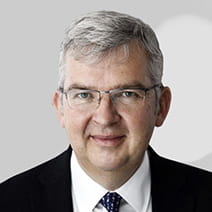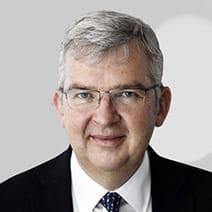- January marks another step in recovery of bonds and equities
- Federal Reserve expected to slow rates hikes but inflation persists in Europe
- Markets take comfort from China lifting lockdown restrictions
Global financial markets resumed in January the ascent they began in October and November, having paused for breath in December. Markets had a lot to digest in 2022 – Covid, the Ukraine crisis, drought in Europe and the political disruption caused by the high turnover of prime ministers in the UK. January marked another step in the recovery.
The rallies were largely driven by hopes that pricing pressures were tamed, central banks would ease their aggressive rate hikes and even pivot, and that the global economy would avoid a hard landing.
Investors expect the Fed to slow rate hikes
At first glance, the economic news from the US was positive. Latest data showed that US GDP beat forecasts and rose 2.9% on the year in Q4, while headline inflation fell in December to 6.5%, which was its lowest level since October 2021, thanks largely to energy prices dropping significantly. But further analysis showed that underlying demand in the economy was weak and that core inflation – regarded as a better indicator of the ‘stickiness’ of pricing pressures – rose 0.3% versus November to an annual 5.7%. Companies are cutting costs but wage demands remain high and the labour market has yet to soften enough to dampen inflation to the Fed’s 2% target.
A US fund manager commented: “Despite inflation data in December having been aligned with expectations, we still cannot conclude that inflation is dead and we are cautious about that narrative. Import prices are rising due to the weakening US dollar, amplifying the inflationary pressure. The inflation pressures are also in the services sector, mainly caused by the pent-up demand, labour shortage and increasing medical costs. The Fed pause is unlikely to happen soon.”
The Fed expects rates to peak at 5.00 to 5.25% in 2023 and stay there for the year. Investors, however, expect the rate hikes to slow and even pivot. Another US manager said: “The Fed will need to see more evidence for cooling inflation, especially in the services sector, before it pauses the hiking. We expect the cooling inflation environment will lead to a more systematic approach to central bank policy, which is positive for both the bond and equity markets.”
US growth and small caps were particularly hard hit in 2022, but US equities were led higher in January by the Nasdaq 100, closely followed by the Russell 2000. We continue to believe in the small-cap premium and that their re-rating could provide buying opportunities. US smaller companies should benefit from the same broad themes as the large cap market with additional sensitivity to domestic economic conditions.
Inflation pressures persist in Europe
Headline annual inflation was falling in the UK, too, with the rate down to 10.5% in December from 10.7% in November. But core inflation remained at 6.3%. The UK also had economic issues to worry about: the International Monetary Fund revised down its growth forecast and predicted it would be the only leading economy likely to contract in 2023.
In the Eurozone, underlying inflationary pressures persisted. The headline rate fell from 9.2% in December to 8.5% in January, but the core rate remained at the all-time high of 5.2%. A fund manager at a European private bank commented: “Although several developed economies are on track to experience further economic weakness this year, recent evidence suggests that the overall impact could be smaller than previously anticipated. Overall, we do not anticipate a collapse in global growth given the strength of labour markets within developed market economies, while Asian countries should provide support to the growth backdrop amid the Chinese reopening.”
Global markets took comfort from China lifting its Covid lockdown restrictions in December and the boost to the global economy that would bring. Chinese stocks delivered double-digit returns in January, but a UK-based emerging markets fund manager was still cautious on the market: “A proven ability to create intellectual property, ownership of strong brands and well-managed retail franchises are some of the attributes of companies we have seen navigate previous periods of high inflation. Regulated assets or assets at high risk of being regulated – particularly in China – often lack pricing power, which can leave them more exposed to inflationary pressures. For that reason, we have tended to avoid holding these companies in our portfolios.”
In our last (Q4) tactical update, we kept our overall risk rating score for markets at three, but this was with a positive lean towards raising it. We feel there is a much more positive tone in markets because the bad news of 2022 has been priced in and arguably, we are through the worst of the peaking interest rate cycle. Trying to predict recoveries is fraught with difficulties and those hoping for a raging bull market in 2023 are likely to be disappointed. But markets can recover quickly, and they will only take with them those who are invested.
KEY RISKS
Past performance is not a guide to future performance. The value of an investment and the income generated from it can fall as well as rise and is not guaranteed. You may get back less than you originally invested.
The issue of units/shares in Liontrust Funds may be subject to an initial charge, which will have an impact on the realisable value of the investment, particularly in the short term. Investments should always be considered as long term.
Some of the Funds and Model Portfolios managed by the Multi-Asset Team have exposure to foreign currencies and may be subject to fluctuations in value due to movements in exchange rates. The majority of the Funds and Model Portfolios invest in Fixed Income securities indirectly through collective investment schemes. The value of fixed income securities will fall if the issuer is unable to repay its debt or has its credit rating reduced. Generally, the higher the perceived credit risk of the issuer, the higher the rate of interest. Bond markets may be subject to reduced liquidity. Some Funds may have exposure to property via collective investment schemes. Property funds may be more difficult to value objectively so may be incorrectly priced, and may at times be harder to sell. This could lead to reduced liquidity in the Fund. Some Funds and Model Portfolios also invest in non-mainstream (alternative) assets indirectly through collective investment schemes. During periods of stressed market conditions non-mainstream (alternative) assets may be difficult to sell at a fair price, which may cause prices to fluctuate more sharply.
DISCLAIMER
This is a marketing communication. Before making an investment, you should read the relevant Prospectus and the Key Investor Information Document (KIID), which provide full product details including investment charges and risks. These documents can be obtained, free of charge, from www.liontrust.co.uk or direct from Liontrust. Always research your own investments. If you are not a professional investor please consult a regulated financial adviser regarding the suitability of such an investment for you and your personal circumstances.
This should not be construed as advice for investment in any product or security mentioned, an offer to buy or sell units/shares of Funds mentioned, or a solicitation to purchase securities in any company or investment product. Examples of stocks are provided for general information only to demonstrate our investment philosophy. The investment being promoted is for units in a fund, not directly in the underlying assets. It contains information and analysis that is believed to be accurate at the time of publication, but is subject to change without notice. Whilst care has been taken in compiling the content of this document, no representation or warranty, express or implied, is made by Liontrust as to its accuracy or completeness, including for external sources (which may have been used) which have not been verified. It should not be copied, forwarded, reproduced, divulged or otherwise distributed in any form whether by way of fax, email, oral or otherwise, in whole or in part without the express and prior written consent of Liontrust.







